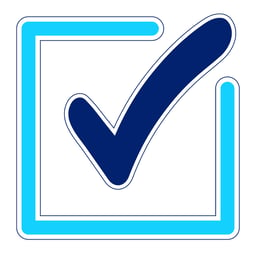Subjectivity in Risk Assessments and Quality Risk Management (QRM) outputs has been under the spotlight recently. In this post we will explore why, how, and what are the tools that you can use to minimize it.
Current Regulatory Context
Since the publication of ICH Q9 in 2005, it became the guidance document on Quality Risk Management for the pharmaceutical industry. It covers the structure of the QRM process to identify risks and take actions to control or reduce unexpected events.
As you may guess, there is one problem: Subjectivity.
Subjectivity in risk assessment can, naturally, influence the management of product quality or patient safety risks.
It is so relevant that the upcoming revision of the ICH Q9 Guidelines identifies it as a major area of improvement.

Tackling Subjectivity in Risk Assessments
For us, at ValGenesis, it’s clear that there are only two ways to evaluate whether we can cross a road. Either:
- We are aware that cars pass at a specific time on specific conditions or,
- The data tells us that a car passes at a specific time on specific conditions.
In other words, either we have a robust risk assessment done or we have the tools to “see” the quality issues before they happen.
With that analogy in mind, and if you want to reduce subjectivity in decision-making, there is only one way. You need to use the data to make better evaluations.
This can be done by increasing the amount of information, data, and fact-based knowledge available. And then you need the tools to accurately interpret and use that information, data, and knowledge.
If we use data to improve the quality and the added value of the risk assessments, subjectivity will be reduced!
Is Digitalization Essential for a More Objective QRM Process?
We believe so!
As the concept paper for the ICH Q9 revision points out, we cannot eliminate subjectivity but we can address the bias and the behavioral factors. This can be done by using digital tools.
Luckily, the pharmaceutical industry has seen significant increase in digitalization efforts. With these efforts has come the ability to generate data in a much more detailed and comprehensive ways and now, we can identify clusters of potential failures that we were not able to do before.
There are major gains ahead. For example, you can identify and even predict issues and that will make you more precise and efficient.
Logically, these new digital capabilities will deliver a stronger quality risk management. They will improve most of the processes and the prospects are, if anything, exciting!
Reducing Subjectivity in Risk Assessments With Digitalization
If we want to fulfil the goal of reducing Risk Management subjectivity, it seems obvious that Digitalization is the path. That said, how can we do it?
Systematic Quality Risk Management
First, you need software that can make the Risk Management activities systematic. And more than systematic, it needs to streamline the risk operations of your entire organization. This alone will save you time, resources, and energy.
It’s time for the Pharmaceutical Industry to abandon its Excel-based and silo-divided routines.
But this is only setting up part of the system! If we feed the system with subjective data, it will deliver us low quality information.
Overview of all Products and Their Lifecycles
A Quality Risk Management System (QRMs) by itself does not solve the subjectivity problem.
You need a different kind of system. A system that aggregates all the data, processes it, and allows you to have a flawless timeline for each one of the products in your portfolio.
That’s where the possibilities start opening up!
First because you enable a virtuous circle where Process Lifecycle Management System (PLMs) informs your QRMs which in turn supports your PLMs. Which means that everything only gets better.
Second, because you are making decisions that are not just science-based, they are also knowledge-based! Suddenly, the subjectivity in risk assessments is almost gone.
And finally, it has an amazing reach. You will be able to build better and more informed risk assessments across product lines and sites. Because all your infrastructure will be automatically feeding data to your system which will help you draw better conclusions.
How can ValGenesis Support you Reducing Subjectivity in Risk Assessments
If we haven’t convinced you by now, let’s state the obvious once again: Digitalization will support your decision-making providing you an understanding of the risks each choice brings.
ValGenesis has a lot of experience digitalizing QRM and PLM processes.
If you think that your team would benefit from the process that we have just described, we welcome you to reach out to us. We can discuss what could be the better options to make sure your processes lose the least – and therefore gain the most!
.jpg)

